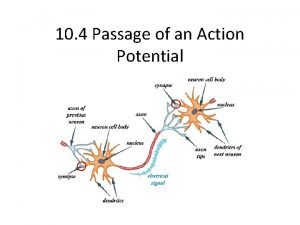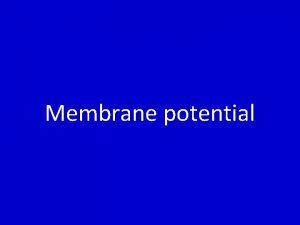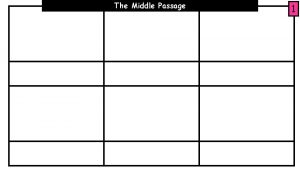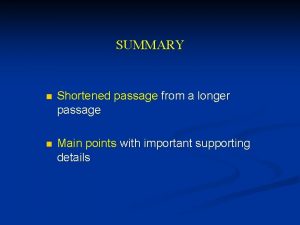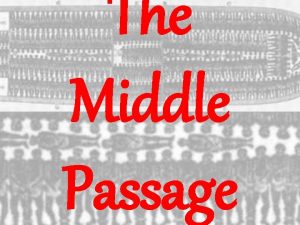10 4 Passage of an Action Potential Learning

















- Slides: 17

10. 4 Passage of an Action Potential

Learning Objectives • To understand how an action potential is propagated along an axon. • To understand the difference between the propagation of action potentials in myelinated and unmyelinated neurones.

So far… • In the last lesson (10. 3), we learnt about: 1. The establishment of the resting potential 2. The initiation of an action potential. + + + + + + - - - - - - - - + + + + - - - - - + + + + + • With regards to the action potential, we simply discussed how it was started, but we didn’t discuss how exactly it was propagated down the rest of the neurone. • That is dealt with this lesson. • It would help if you all practiced your Mexican wave……

Recap Think back to last lesson and discuss how a Mexican Wave can explain the passage of action potentials down an axon… • Is anything physically carried down the axon? • Imagine focussing on one person in a stadium while Mexican Waves are passing around. – Visualise this person on their own. – Picture their movement. – Now relate this to the polarisation, depolarisation and repolarisation of an axon.

BASICS OF PROPAGATION

Basics of Propagation • As you should know, once an action potential has been initiated at the ‘start’ of an axon, it ‘moves’ rapidly down it. • Remember, that nothing physically moves along the axon. • Instead, the reversal of charge is reproduced continuously along the axon. As one region of the axon produces an action potential and becomes depolarised, it acts as a stimulus for the next region to become depolarised too. As the next section becomes depolarised, the previous one becomes repolarised and returns to resting potential… + + + + - + + - + - + - + + - - + - + + + And the process goes on and on…

Be aware that the following applies to action potentials being propagated in UNMYELINATED neurones! STEP-BY-STEP GUIDE TO ACTION POTENTIAL PROPAGATION

1. The Resting Potential Na+ + + - +- - - - - K - - - - - + + + Na+ At resting potential the concentration of sodium ions out the axon membrane is very high. The concentration of potassium ions inside the axon is lower, which means that the outside of the axon is POSITIVE in relation to the inside. The axon membrane is POLARISED

2. Initiation of the 1 st Action Potential Na+ - - + + ++ - - - - K + + - - - - - + + + + + Na+ A stimulus causes a sudden influx of sodium ions and hence a reversal of charge on the axon membrane. This is the action potential. The axon membrane is DEPOLARISED

3. Stimulation of the NEXT Action Potential Na+ - - + + + + ++ + + - - - K + + - - - - - + + + + Na+ The first action potential caused by the influx of sodium ions, causes the opening of sodium voltage-gated channels further along the axon. The resulting influx of sodium ions, causes a new action potential (depolarisation) here. Behind this region, the sodium voltage-gated channels close, and the potassium voltage-gated channels open, causing potassium to leave.

4. Repolarisation of the Axon Na+ + + - - + ++ + + - - K - - + + - - - - + + + + + Na+ The action potential is propagated once again (3 rd time in our example). Notice how the area where the 1 st action potential occurred, is returning to its resting potential. That area has been REPOLARISED Now notice how the area of the second action potential, is removing potassium ions in just the same way…

5. Getting Back to Normal Na+ + + - - + ++ + + - - Na+ K - - + + + + - - - - + + + Na+ Once again, everything has just shifted to the right by ‘one section’. Notice how the original ‘section’ is now pumping out sodium ions, ensuring that the resting potential of around -65 m. V is established. That part of the axon is now ready to receive a new stimulus and start the whole process off again.

WHAT ABOUT MYELINATED NEURONES?

Passage through a myelinated neurone… • Think back to the structure of myelinated neurones. • The many ‘wrappings’ of the Schwann cells around the axon lead to layers of a lipid called myelin to build up. • The myelin sheath is an electrical insulator, which prevents action potentials from forming in area of ‘myelination’. • Action potentials can only occur at Nodes of Ranvier. • Because of this, action potentials effectively ‘jump’ from node to node.

Node to Node • As a result of this node-hopping, the propagation of action potentials through myelinated neurones is much faster than in unmyelinated ones. This method of action potential propagation is known as SALTATORY CONDUCTION

Learning Objectives • To understand how an action potential is propagated along an axon. • To understand the difference between the propagation of action potentials in myelinated and unmyelinated neurones.

Complete all Summary Questions on Page 170.
 Graded potential vs action potential
Graded potential vs action potential Graded potential vs action potential
Graded potential vs action potential Graded vs action potential
Graded vs action potential Graded potential vs action potential
Graded potential vs action potential Graded potential
Graded potential Source of bioelectric potential is
Source of bioelectric potential is End-plate potential vs action potential
End-plate potential vs action potential End-plate potential vs action potential
End-plate potential vs action potential Action potential resting potential
Action potential resting potential Action potential resting potential
Action potential resting potential Action potential learning
Action potential learning Why is water potential measured in pascals
Why is water potential measured in pascals Water potential in plant cells
Water potential in plant cells Water potential equation
Water potential equation How to find pressure potential
How to find pressure potential Sales potential vs market potential
Sales potential vs market potential Equipotential lines
Equipotential lines Electric potential energy
Electric potential energy










